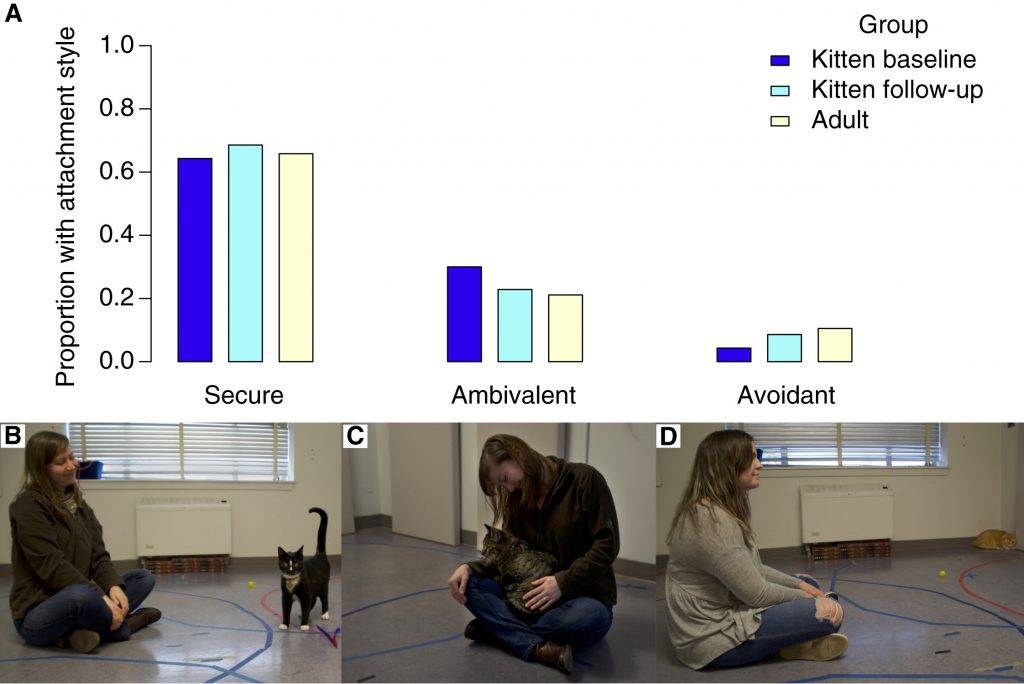
(A) Proportion of three main attachment styles observed in kittens and adult cats. (B) Cat with secure attachment. (C) Cat with insecure-ambivalent attachment. (D) Cat with insecure-avoidant attachment.
Worldwide, domestic cats (Felis silvestris catus) outnumber domestic dogs (Canis familiaris). Despite cats’ success in human environments, dog social cognition has received considerably more scientific attention over the last several decades [1, 2, 3]. A key aspect of what has been said to make dogs unique is their proclivity for forming attachment bonds, including secure attachments to humans [1, 3], which could provide scaffolding for the development of human-like socio-cognitive abilities and contribute to success in human environments [3]. Cats, like dogs, can be found living in social groups or solitarily, depending on early developmental factors, resource distribution, and lifetime experiences such as human interaction [1, 2, 4]. Despite fewer studies, research suggests we may be underestimating cats’ socio-cognitive abilities [2]. Here we report evidence, using behavioral criteria established in the human infant literature [5, 6], that cats display distinct attachment styles toward human caregivers. Evidence that cats share social traits once attributed to dogs and humans alone would suggest that broader non-canine-specific mechanisms may be needed to explain cross-species attachment and socio-cognitive abilities.
